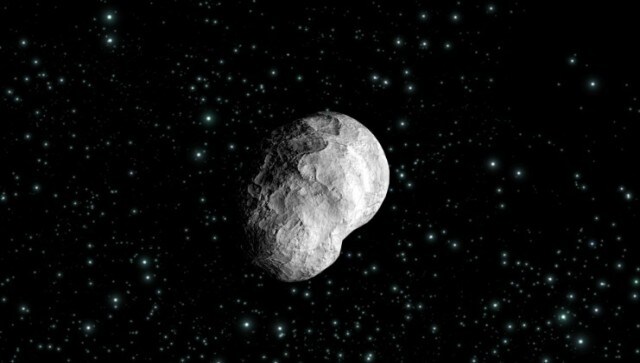A Christmas asteroid is approaching Earth. What is it and how scared should you be?
A Christmas asteroid, which is just about the size of the Statue of Liberty, is rapidly approaching Earth and the European Space Agency has challenged astronomers to spot the rock

The Christmas asteroid is expected to make a close approach to Earth on 15th December 2022. Representative image. ESA.int
Amateur astronomers are in for a Christmas treat!
While launching its new asteroid toolkit this holiday season, the European Space Agency (ESA) has enlisted the help of space enthusiasts in finding a space rock around the size of the Statue of Liberty that is rapidly approaching Earth.
The space rock known as “2015 RN35”, which was first discovered on 9 September, 2015, is travelling at a blazing 21,276 km per hour.
According to ESA, the asteroid will make its closest approach towards Earth on 15 December at 1.42 pm IST.
The asteroid will be 686,000 kilometres away from the Earth.
Richard Moissl, ESA Head of Planetary Defence said in a blog post, “Like many middle-sized space rocks out there, we just don’t know that much about it. This middle-sized asteroid, 60-140 metres in diameter, will fly close to Earth on 15 December, becoming visible to amateur astronomers around the globe. Join the challenge to spot it with #ESAChristmasAsteroid.”
What are asteroids made up of?
Space rocks or asteroids are small and rocky pieces of minerals that were left over when the solar system formed approximately 4.6 billion years ago.
Since they are smaller than planets, they are often referred to as minor planets.
The NASA Joint Propulsion Laboratory believes that an asteroid is “considered to be close to Earth if it is less than 1.3 times the distance between Earth and the Sun, which is approximately 93 million miles away.”
How to spot the Christmas asteroid?
Spotting the asteroid can be a challenge.
According to the ESA, the space rock will not shine brightly in the sky.
The space rock has a visual magnitude below 14, which is comparable to that of Pluto.
“2015 RN35 will not shine bright in the skies like the star of Bethlehem did millennia ago. So why is 2015 RN35 interesting? Firstly, there’s not a single asteroid out there that isn’t. Near-Earth asteroids fascinate ESA’s Planetary Defence Office in particular because they give us key insights into the composition and trajectory of potentially hazardous objects,” ESA said.

The Christmas asteroid will make a safe approach to Earth on 15th December. ESA.int
The agency suggested that telescopes 30 centimetres in diameter and greater may spot the asteroid.
Notably, observers in the southern hemisphere will have the best view — and a higher chance of getting a better view than those in northern latitudes.
According to the agency, one of the many reasons that astronomers are quite excited about the holiday treat is that there is not much information available about it: its composition, exact size, if it is rotating on its axis, what it is made up of, and the specifics of its orbit remain unknown.
ESA said, “We don’t know what it’s made of or precisely how big it is or if it’s spinning on its axis or even know its orbit particularly well. Near-Earth asteroids like this one are important as they offer key insights into the composition and trajectory of potentially hazardous objects.”
Also read: Mysterious US spacecraft returns after 908 days, speculation grows over secret mission
Will it hit Earth?
No.
The agency has said there is zero chance that the asteroid will strike the Earth in the next 100 years.
With inputs from agencies
Read all the Latest News, Trending News, Cricket News, Bollywood News,
India News and Entertainment News here. Follow us on Facebook, Twitter and Instagram.
also read

Explained: Indigenous people and the nature they protect
Globally, Indigenous people own or use a quarter of the world's land, but safeguard 80 per cent of the biodiversity. It is found that the total number of birds, mammals, amphibians and reptiles were highest on lands managed or co-managed by them

US to keenly observe activity in space for potential risk as China increases activity in low Earth orbit
Last month, the Chinese space programme launched the final three modules of its Tiangong Space Station and stationed a crew of three astronauts for a brief period. China built its own space station with little to no help from any other country.

The end is nigh? Climate, nuclear crises spark fears of worst
When the world rang in 2022, few would have expected the year to feature the US president speaking of the risk of doomsday, following Russia's threats to go nuclear in its invasion of Ukraine
